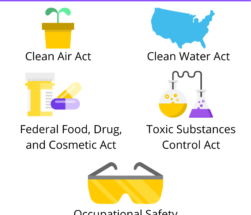In today’s ever-evolving technological landscape, ensuring a secure office environment is vital for any organization. With increased reliance on technology, the potential risks and vulnerabilities related to data breaches, cyber attacks, and physical security threats have become more prevalent than ever. Implementing stringent security measures and protocols is crucial to safeguarding sensitive information, protecting employees, and maintaining business continuity. This article will explore the essential office security measures and protocols that every organization should consider.
Physical Security
Physical security forms the foundation of any comprehensive office security strategy. An organization must implement protocols designed to control access, prevent unauthorized entry, and protect the physical assets within the premises.
Access Control: Restricting access to authorized personnel only is crucial. Implementing measures such as keycard systems, biometric scanners, and security guards can effectively regulate access to the office space.
Video Surveillance: Deploying high-quality security cameras at strategic locations helps monitor and record activities, acting as a deterrent and assisting in investigating any security breaches that may occur.
Visitor Management: Implementing a visitor management system allows organizations to track and monitor guests, ensuring they receive proper authorization and limiting their access within the premises.
Secure Storage: Confidential documents, equipment, and other valuable assets should be stored securely in locked cabinets or rooms, with limited access granted only to authorized personnel.
Cybersecurity
In today’s digitally connected world, protecting sensitive data and digital assets is of utmost importance. Cybersecurity measures play a vital role in safeguarding an organization’s digital infrastructure, preventing data breaches, and maintaining online privacy.
Firewalls and Intrusion Detection Systems: Deploying robust firewalls and intrusion detection systems is critical to monitor and control network traffic, preventing unauthorized access and detecting potential threats.
Multi-factor Authentication: Enforcing multi-factor authentication for accessing systems and critical applications adds an extra layer of security by combining something the user knows (password) with something they possess (token, fingerprint), significantly reducing the risk of unauthorized access.
Regular Software Updates and Patch Management: Ensuring that operating systems, applications, and security software are regularly updated with the latest patches and fixes helps address vulnerabilities and enhances overall system security.
Employee Training and Awareness: Regular cybersecurity training sessions for employees help create awareness about best practices, such as identifying phishing emails, practicing strong password hygiene, and reporting suspicious activities.
Internal Policies and Procedures
Establishing robust internal policies and procedures sets clear guidelines for employees, promotes security consciousness, and aligns everyone towards a common goal of maintaining a secure office environment.
Acceptable Use Policy: Defining an acceptable use policy regulates how employees use organization-provided devices, internet access, and handles confidential data, protecting the organization from internal threats.
Data Backup and Recovery: Implementing automated data backup solutions reduces the risk of data loss in case of system failures, natural disasters, or cyber attacks. Regularly testing backup restoration procedures ensures data availability when needed.
Incident Response Plan: Developing a comprehensive incident response plan allows organizations to effectively respond to and mitigate security incidents. This includes identifying key contacts, defining response steps, and establishing communication channels.
Remote Work Policy: With the rising trend of remote work, implementing a detailed policy regarding secure remote access, data handling, and device security minimizes vulnerabilities associated with telecommuting.
In conclusion, ensuring a secure office environment goes beyond simply implementing a few security measures. It requires a comprehensive approach that includes physical security measures, cybersecurity protocols, and well-defined internal policies. By implementing the outlined security measures and protocols, organizations can significantly reduce the risk of security breaches, mitigate potential damages, and protect their valuable assets and data.









